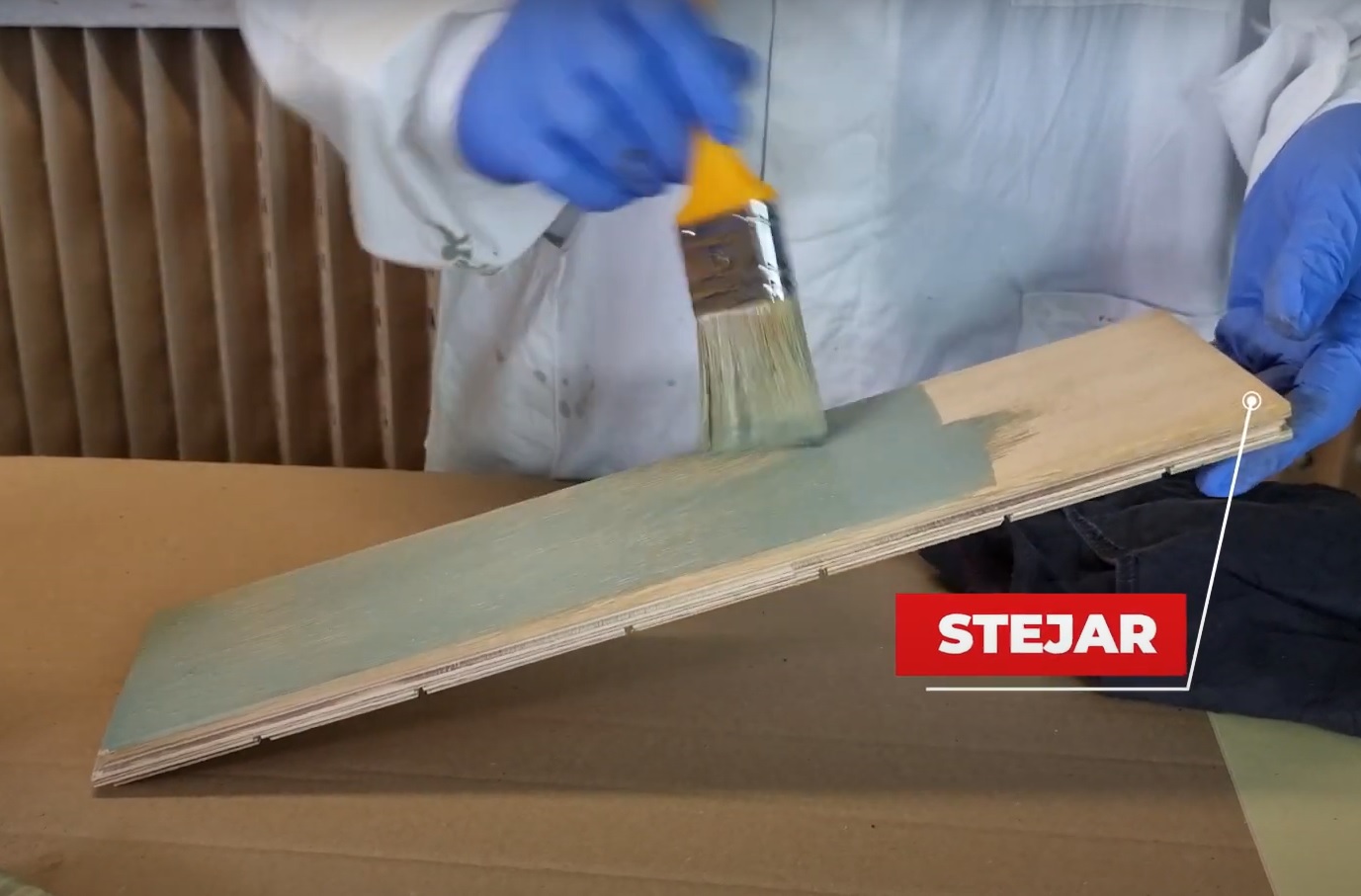To stain wood we mostly use classic shades. We are used to walnut, oak, mahogany or wenge furniture. Special colours seem impossible to achieve on wood and we think that turquoise or lilac furniture is either painted or made of melamine chipboard. You don't have to stain wood to get a special colour. We can stain it exactly the same colour as the paint, but the grain must remain visible.

This is the kind of colouring you will see in the video at the end of the article. The berries are made by Lomilux according to the RAL card, and the painting techniques allow to obtain several effects. Find out what RAL cards are, how the effects are achieved, how the colour differs depending on the wood being painted.
Why we use colour cards
For those who don't know, the RAL card is a "collection" of universally recognised colours, a kind of common language for identifying a colour. If someone in Constanta, Madrid or Istanbul orders, for example, RAL 7016, they will get the same anthracite grey colour.
But it is not the only card used to identify a set of colours. Worldwide, the best known is Pantone, with the Pantone Institute being an authority on colour. There are others, and well-known manufacturers also have their own colour charts.
Depending on the transparency, the same colour can be paint or berry. Paint completely covers the grain of the wood, while the stain leaves it visible, highlighting the natural grain pattern of the wood. Whether it is paint or stain, the colour chosen from the RAL must be the same when viewed in the box. When applied, however, they will be slightly different because, in the case of the stain, the final shade is influenced by the wood it is applied to and the lacquer protecting it.
Even if the colour is identical, the effect will be different depending on the wood used and the method of application
As the wood is seen through the bath its colour will influence the final appearance. In the video you will see the berry applied to the resinous (fir tree) and on oak. The light colour of the fir has very little influence on the final appearance, whereas the oak, with its yellowish colour with shades of green and grey, has a much greater influence on the final result. The absorbency of the wood and its natural pattern also contribute to this difference. This is why fir wood will never look like oak, even if the colours used are identical.
The method of application can make the appearance very different. In the example above, the applied wood stain is wiped on half of the wood used. Wiping will bring out the pores and stain them, but the overall colour will be lighter and more influenced by that of the wood. On the un-dried side the colour will be more uniform, stronger and will cover the wood better. Such an application works very well on wood with large pores and is less spectacular on wood with small pores or no pores (resinous).
In the case of the fir tree, no wiping was done because the absorption is too fast and the time too short for a uniform and effective wiping. When wood absorbs a lot (plopfor example) or large surfaces (parquet) need to be painted, the paint needs to absorb and dry more slowly. Have you seen such a bath here.
The lake changes the colour of the bath.
The final colour is also influenced by the primer/lacquer that is applied on top. All varnishes have a yellow tint which is especially visible in light colours. Sometimes the yellow of the varnish combines with the colour of the bath resulting in a different colour. This is the case with blue that turns green.
Yellow tint is not the same in all lakes. The ones that keep the best effect and colour are acrylic varnishes. They are also used to make colour swatches, precisely because they change their shade very little. We also used acrylic varnish to protect the colours applied to the fir and oak.
Water-based varnishes can also be used because they have a whitish, almost yellow-free colour. The problem with these varnishes is the slight lack of transparency. The yellowest are nitrocellulose varnishes.
In the video below you will see the application of a RAL stain on fir and oak wood and you will be able to appreciate the differences due to the wood, the application method or the varnish. You will also see how the varnish brightens the wood, making it more lively and pleasant.



























Add comment